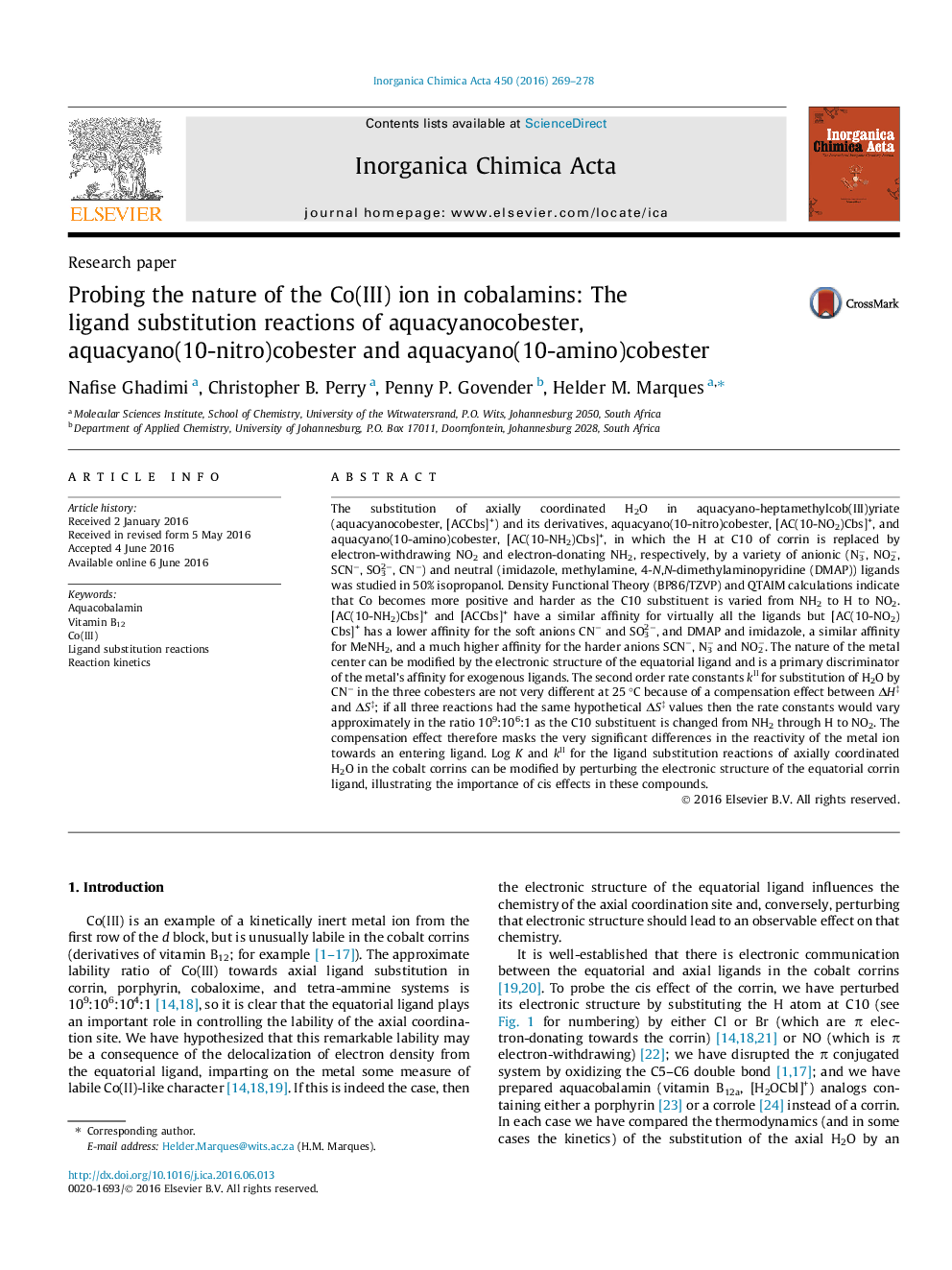| Article ID | Journal | Published Year | Pages | File Type |
|---|---|---|---|---|
| 1305398 | Inorganica Chimica Acta | 2016 | 10 Pages |
•The electronic structure of corrin is perturbed by substitution at C10.•DFT calculations are used to show the effect on Co of C10 substitution.•Affinity for an exogenous ligand is affected by the nature of the C10 substituent.•The C10 substituent has a profound effect on the rate of axial ligand substitution.•This demonstrates the importance of cis effects in Co(III) macrocyclic chemistry.
The substitution of axially coordinated H2O in aquacyano-heptamethylcob(III)yriate (aquacyanocobester, [ACCbs]+) and its derivatives, aquacyano(10-nitro)cobester, [AC(10-NO2)Cbs]+, and aquacyano(10-amino)cobester, [AC(10-NH2)Cbs]+, in which the H at C10 of corrin is replaced by electron-withdrawing NO2 and electron-donating NH2, respectively, by a variety of anionic (N3−, NO2−, SCN−, SO32−, CN−) and neutral (imidazole, methylamine, 4-N,N-dimethylaminopyridine (DMAP)) ligands was studied in 50% isopropanol. Density Functional Theory (BP86/TZVP) and QTAIM calculations indicate that Co becomes more positive and harder as the C10 substituent is varied from NH2 to H to NO2. [AC(10-NH2)Cbs]+ and [ACCbs]+ have a similar affinity for virtually all the ligands but [AC(10-NO2)Cbs]+ has a lower affinity for the soft anions CN− and SO32−, and DMAP and imidazole, a similar affinity for MeNH2, and a much higher affinity for the harder anions SCN−, N3− and NO2−. The nature of the metal center can be modified by the electronic structure of the equatorial ligand and is a primary discriminator of the metal’s affinity for exogenous ligands. The second order rate constants kII for substitution of H2O by CN− in the three cobesters are not very different at 25 °C because of a compensation effect between ΔH‡ and ΔS‡; if all three reactions had the same hypothetical ΔS‡ values then the rate constants would vary approximately in the ratio 109:106:1 as the C10 substituent is changed from NH2 through H to NO2. The compensation effect therefore masks the very significant differences in the reactivity of the metal ion towards an entering ligand. Log K and kII for the ligand substitution reactions of axially coordinated H2O in the cobalt corrins can be modified by perturbing the electronic structure of the equatorial corrin ligand, illustrating the importance of cis effects in these compounds.
Graphical abstractThe effect of perturbing the electronic structure of the corrin on the chemistry of the axial site in the Co(III) corrins is demonstrated.Figure optionsDownload full-size imageDownload as PowerPoint slide
